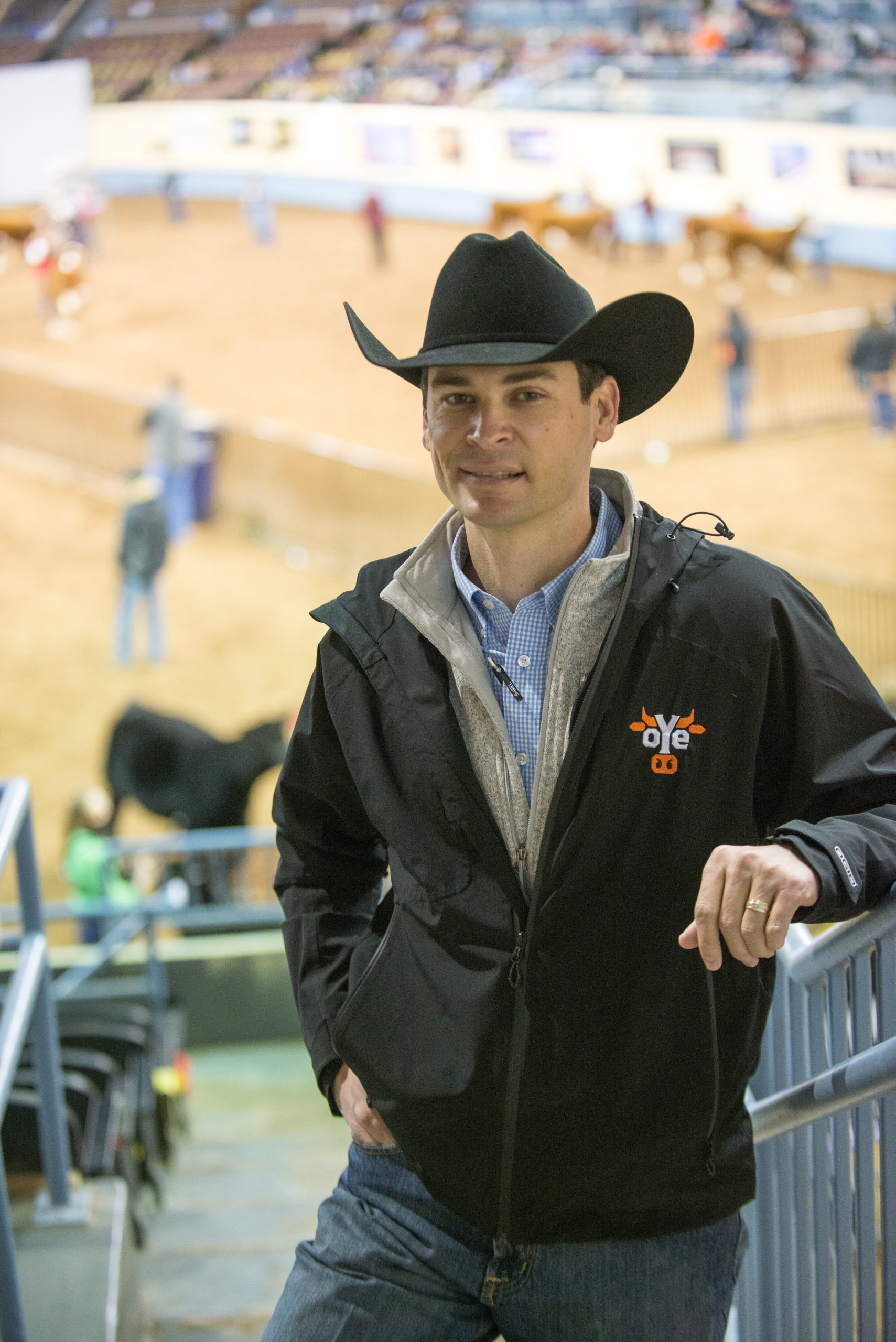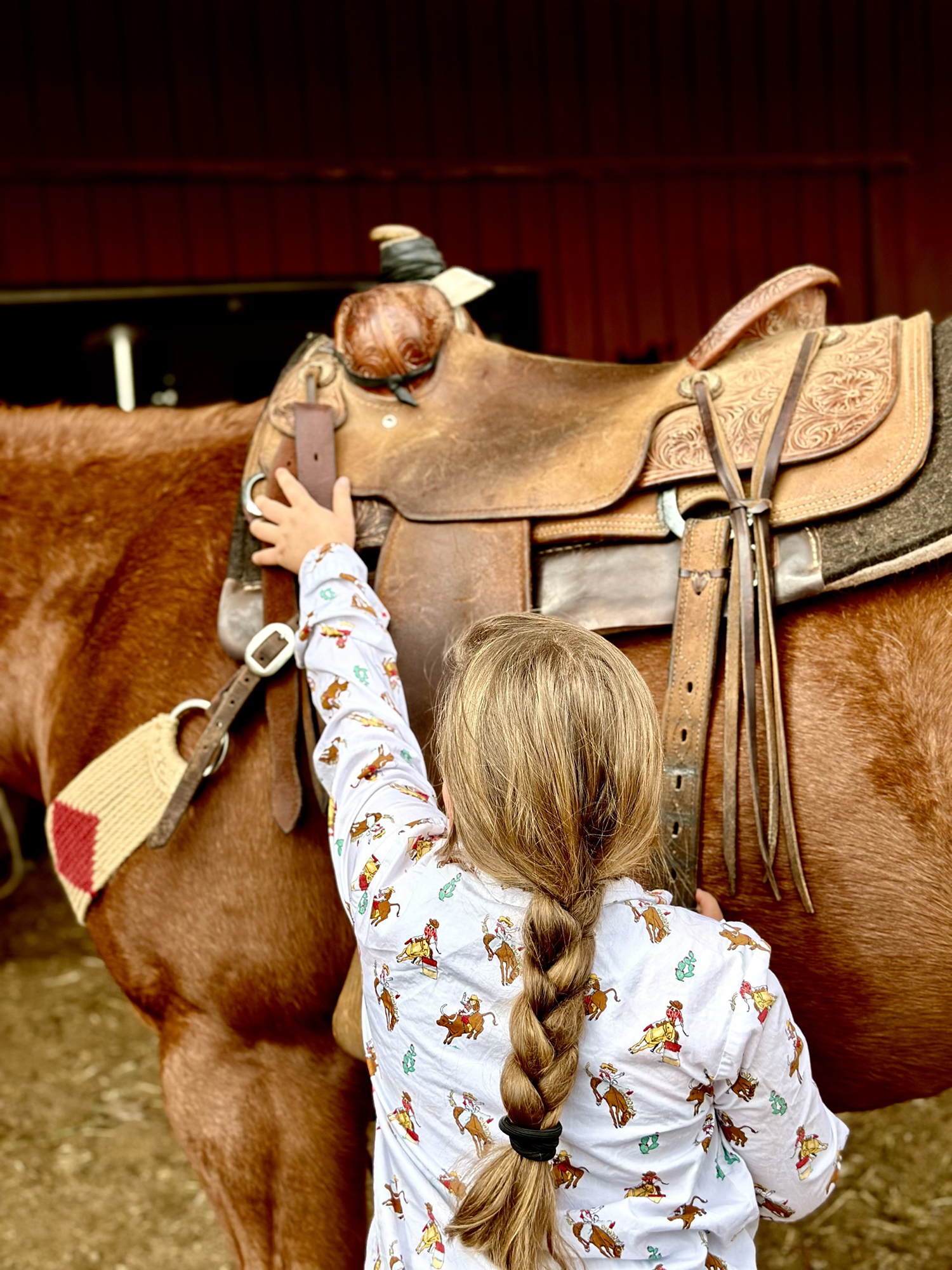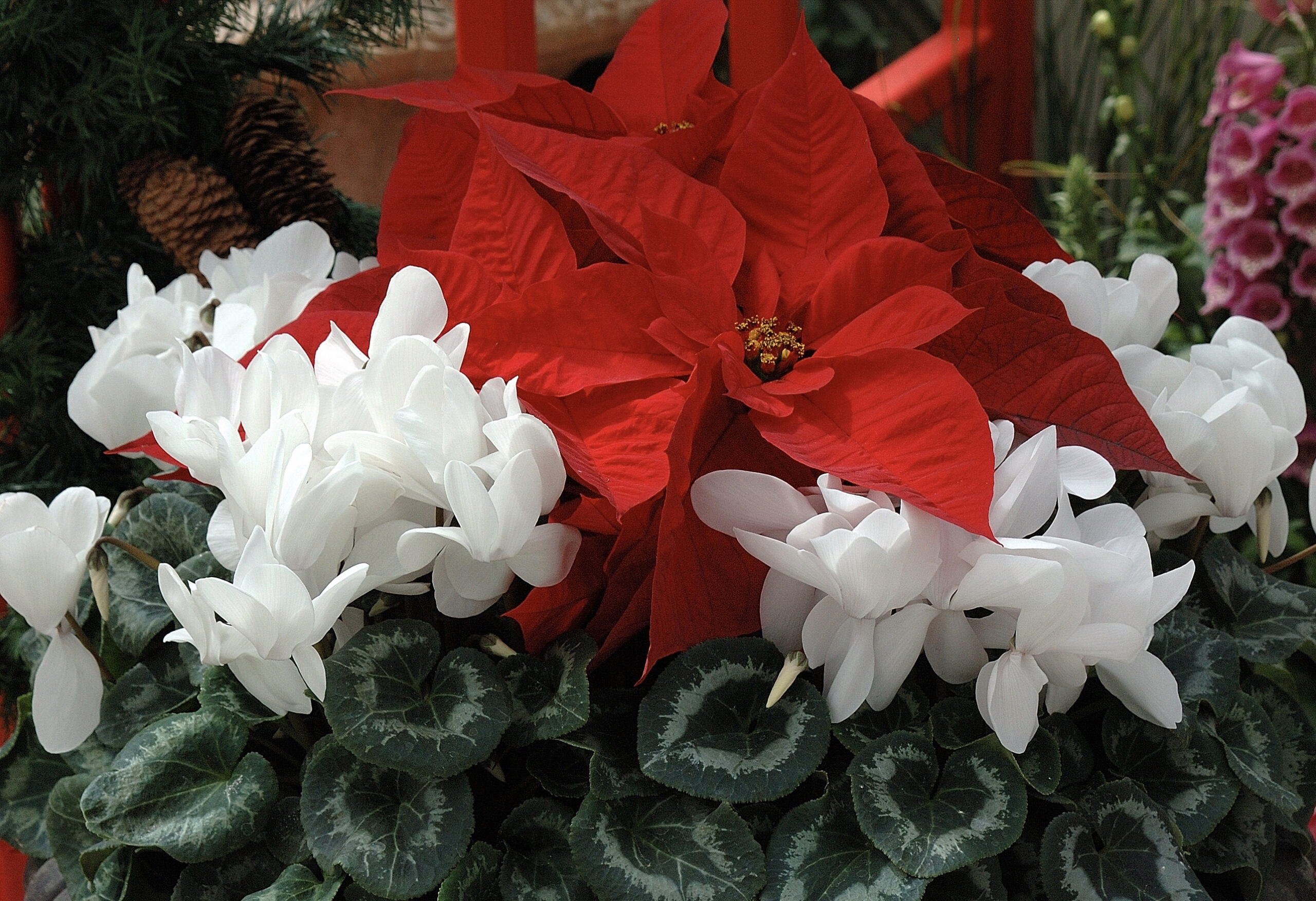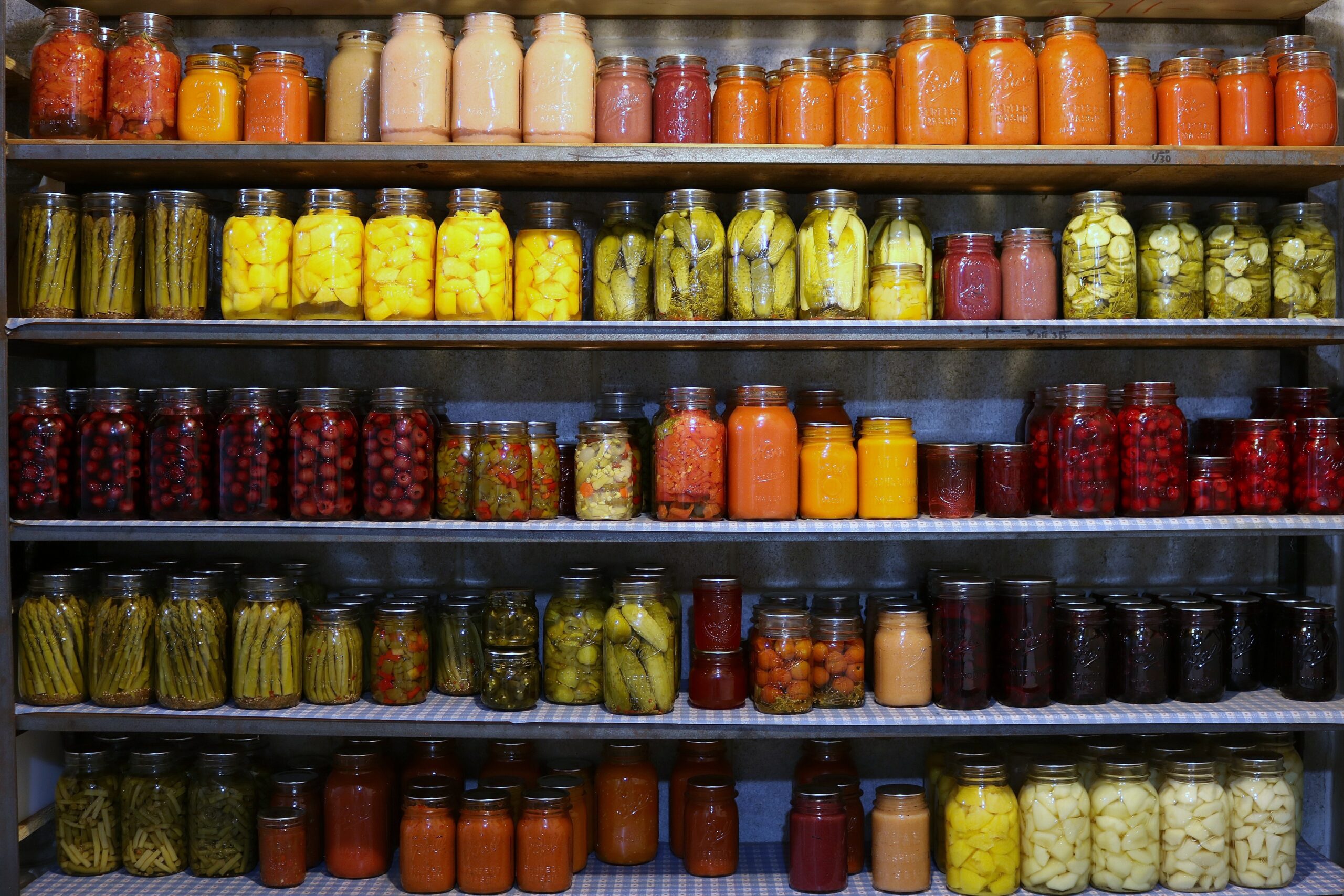Country Lifestyle
Tyler Norvell – OYE President

He said it was the job he always wanted, and now, as Tyler Norvell ends his first decade at the reins of the Oklahoma Youth Expo, he’s proud of the work he, the OYE Board of Directors, and staff have accomplished.
Practically every man, woman, student, or child involved in agriculture in the state of Oklahoma knows about OYE. The annual livestock show, held in March at the Oklahoma State Fairgrounds in Oklahoma City, annually draws participants from every single one of the state’s 77 counties.
Despite a tumultuous 2020, which resulted in a devastating shutdown half-way through the event, the future looks bright for 2020. With a pandemic still terrorizing the country, Norvell and team are ready to produce the Greatest Show.
Norvell grew up in Amber, Okla., as the son of a dairyman, putting in long hours on the dairy farm. “To this day I joke that the best day of my life was when I was 13 years old and he sold it,” he shared. “But it taught me how to work.”
While out of the dairy business, Norvel kept busy, as both his grandfathers farmed everything from cotton to alfalfa, and also raised cattle. He worked every summer and through the winters, farming and ranching his whole life. It’s not surprising that he was involved in showing livestock from the moment he was old enough until the day he graduated. “I wouldn’t be where I am today without showing, FFA, and my ag teacher, Billy Scott, who I think the world of,” he recalled.
After graduation, Norvell attended Butler County Community College in Kansas on a livestock judging scholarship for a couple years before transferring to Oklahoma State University. It was there, in 2005, that he and his livestock judging team won a National Championship.
Just after that win he got a call that would shape the course of his career. Norvell’s girlfriend, and now wife, Beth, worked with the late Justin Whitefield, who was the OYE Executive Director. Whitefield had ties to Oklahoma Farm Bureau, and knew they were looking for a lobbyist; specifically, someone that had actual hands-on agriculture experience.
“I was just a 21-year-old kid at the time, and this unexpectedly came up. I interviewed with them, and they hired me. I was working full time lobbying for Oklahoma Farm Bureau and going to college for my last semester,” he shared.
From 2005 through 2012, Norvell worked through the ranks at Oklahoma Farm Bureau, rising to the rank of the Vice President of Government Affairs.
Then opportunity arose. “I always said the only job I’d ever leave Oklahoma Farm Bureau for was OYE,” he shared. “I had looked up to Justin and seen what he had done to get the organization moving in the right direction, and how much he had improved the event from the time I had shown in it.
“The actual livestock show has been going on for 106 years, but OYE, the non-profit, wasn’t formed until 2002. That first year, there was one $1,000 scholarship awarded and the premium sale grossed $300,000. Justin passed away in 2006, but he had started it on the path to be very successful. In 2019 (because there was no premium sale in 2020), the premium sale grossed $1.3 million and we presented more than $350,000 in scholarships.”
He added, “I wanted to go out and get it right. I believe in the program, and what Justin was doing for kids in both urban and rural Oklahoma, and I thought it would be a neat opportunity to give back. I love doing what I get to do.”
When Norvell started at OYE, his responsibilities were broad. A smaller staff meant that he could be found daily handling several parts of the organization, from directing people coming in with livestock at the event to fundraising. “Whatever had to be done, I would do. Now we have a few more staff members, and my main job is to oversee operations and all the fundraising,” he explained.
Funds are an integral part of any non-profit, and with an eye to the future, Norvell made one of his first priorities ensuring the legacy of Oklahoma Youth Expo.
“When I interviewed for the job, I met with Mr. Bob Funk, our Chairman, and Mr. Jimmy Harrel, our Vice Chairman. I told them I was on board, as long as they stayed involved. About a year later, I went to Mr. Funk and said, ‘You know, when you and Mr. Harrel are gone, I want to make sure this thing lives on forever. If we can make sure we have our operating expenses covered and the facility to put it on, we can ensure that.’ And Mr. Funk said he thought it was a great idea,” Norvell recalled.
A year later, Funk announced his legacy gift, a $5 million testamentary challenge match for all gifts to OYE Onward. Every campaign gift, regardless of size or type, is matched dollar-to-dollar by Mr. Funk, up to $5 million.
“To date we have raised $2.5 million to match his $5 million, and matching his gift completely has been our goal from the start. This program is extremely important to me. I grew up showing every year that I could, my girls are involved with it. I haven’t missed an Oklahoma Youth Expo since I was eight years old, and it means the world to me and my family and friends.” He added, “We had to make sure that his program will live forever to give every Oklahoma youth the same opportunity the youth of the last 106 years have had.”
Contributing to the Onward Campaign is simple, and more information can be found at https://okyouthexpo.com/onward-campaign/
OYE 2020
“If we had known in 2020 what we know now, I believe we could have finished our show. We just had no idea what would happen,” Norvell says, reflecting on the March Sunday when he had to announce that the event, not even half-way completed, would be immediately shut down.
The 10 day event was predicted to have more than 22,000 animals as well as 7,000 exhibitors and family members on the fairgrounds during the event. Norvell and his staff were in constant contact with the department of health, monitoring the situation. Just days before the start of the event, the first COVID-19 case was diagnosed in Oklahoma.
The event felt like a time-bomb. “I tell people it felt like those first five days of the event took five years. It felt like they took forever. Halfway through we called an audible, and decided to shorten the event to get people home quicker,” Norvell recalled.
With that decision made on Saturday, March 14, shoulders relaxed and tensions lessoned. “We got that done and then felt confident we would be able to finish the show,” he said.
Just 24 hours later, all that changed. A health emergency was declared in Oklahoma County, and the event was shut down. Youth exhibitors and their parents were devastated, tears flowing, as the facility and event shut down.
“It was horrible. We were watching the kids and parents mourn. I had a good friend tell me, ‘Tyler, it’s like they were mourning an unexpected death because there was no closure.’ Of course we know that it’s not anywhere the same as death, but they did not have the closure of more than a year’s work of worth. They didn’t get a chance to see their hard work through,” he said.
Norvell was dealt a double-dose of grief. In addition to dealing with the aftermath as the event’s producer, the cancelation hit much closer to home. “My daughter didn’t get to show her pigs, and so it was tough to wear both hats, but it helped me understand just how hard it was on the families and to experience it first-hand,” he said.
Norvell, the OYE Board of Directors, and staff went to work. Immediately they announced that any 2020 senior who had a market animal (breeding animals had already been shown when the event shut down) would be eligible to show again in 2021.
Next was a goal to raise $100,000 for hardship scholarships for 2020 seniors. “We said anyone who was a 2020 senior that did not get an academic scholarship should apply to get $1,000. We had 116 kids apply for those, so we raised another $16,000 so that every applicant got a scholarship,” Norvell said.
Lastly, OYE refunded anyone that had a market animal entered that didn’t get to show it.
Country Lifestyle
Western Housewives – April 2024

I am a mother. I do not know about the rest of you mothers, but the second I became “Mom,” my life became a constant state of wondering if I am doing a good job.
That is especially hard to tell when you choose to homeschool. I have no feedback from anyone that is not family. No teacher conferences telling me the little girl talks too much or the oldest boy can not sit still. Sure, I could ask my husband how he thinks our kids are maturing emotionally and intellectually. Still, he would most likely look out the window and see the aforementioned children running around in the sand with only socks on. He would then look at me and ask me to make him a quesadilla. I would say yes, we would joke about socks, and life would go on. See? Zero feedback to go on here.
So, you start to rely on personal experiences. You come up with little tests throughout your days to rate your kids “ready for society” level.
Example 1: A trip to the big city where the kids treat the grocery store as their personal snack depot. They successfully eat all the grapes and a whole block of cheese in your basket before you can check out. As you leave, they tell the door greeter, “Have a nice day.”
Example 2: Your husband enters an indoor rodeo. You are bouncing the baby and notice your oldest child is eating a bag of dippin dots. First, you smile and then remember that she has no money. Come to think of it, the concession stand is not even open. You have now concluded your firstborn has broken into the closed concession stand with her posse of four-year-old convicts and has helped herself to some ice cream.
Example 3: You are in church. The children have managed to be nice and quiet the entire time. After the message and the closing “Amen” is said, your three-year-old turns to you and says, “Well, that wasn’t so bad.”
After a little while, you start to question your “Ready for Society” tests. Are they productive? Are they accurate? I figure the answer to that question is better left unanswered.
One evening this summer, after I had quit conducting all these tests, I was mourning the loss of my children’s place in society when I looked up and noticed all our horses running down our driveway, headed for the neighboring pastures. For a minute, I just sat there wondering what I should do. I was holding the baby and wearing the ever-practical slip-on loafer and had absolutely no idea what was for supper. That had nothing to do with the horses being out, but that is part of being a housewife, I guess. You always wonder if you left the iron on and what is for supper.
While I sat there stunned, pondering life’s biggest questions, my husband and my daughter yelled at me to get a move on as they were already springing into action. My husband ran to stop them, and my daughter was on her way to the barn for some halters. Meanwhile, I was tripping over my loafers, scaring the horses and making already stressful matters much worse.
My husband finally got the horses cornered at the far end of our neighbor’s pasture and waved at me for some assistance. I handed the baby to my daughter and told her to watch the boys and stay in the house while I headed to help.
Within 30 minutes, we caught the horses and led them back to the corrals. I was in a near state of panic, wondering how long the boys had been crying and what state of mind my daughter was in, having just witnessed her dad nearly sweat to death and her mother make terrible fashion choices.
To my surprise, as I walked up to the house, I saw three happy children on the porch eating a supper of plums and peaches. The boys laughed at their sister as she shuffled little cars and cows around for them to play with. Not only had she fed and entertained her brothers, but she had also cleaned the house and fed the chickens to boot. I just stood there quietly watching for a while, not wanting to disturb the moment.
After the kids passed their first ever Ready for Society test, I realized that society’s standards versus my own were probably quite different. Society tells me that my kids need to be clean and quiet. Seen but not heard. Able to recite the ABCs on command but have no opinion on political matters. To be kind to everyone but never bring up God’s name and what He has to do with it. Society says my kids should fall into the assembly line and attend a good college someday to get a good minimum-wage job.
Why would I want my kids to fit into society when I do not even fit into society? No, I think I will keep my dirty little misfits all to myself. I think I will continue raising them to know how to care for themselves and each other. I will continue to show them how to serve God and work hard. I will continue to raise them never to wear slip-on shoes in the pasture and that plums and peaches are a totally acceptable supper on a warm summer evening.
Country Lifestyle
Poinsettia Partnerships Will Make Your Holidays Beautiful

By
Norman Winter
Horticulturist, Author and Speaker
National Poinsettia Day just passed, December 12 to be exact. While I am sure the powers to be wanted a celebratory type day, from what I have been seeing this year is this may have been a deadline day. This most likely applies to poinsettia partners too! If you are asking what a poinsettia partner is then put on your thinking cap and gather around.
Proven Winners got most of us to thinking partners when they introduced the concept of combining poinsettias with Diamond Frost euphorbias. This is one of the best ideas ever and we now actually have three choices, Diamond Frost, Diamond Snow with double flowers and Diamond Mountain that is the taller of the three.
To a horticulturist like myself this combination is so special because both the Poinsettia and the Diamond Frost are Euphorbias. That’s right, they are cousins. Just like Christmas, families visiting and long-lost cousins getting together. Of course, the main reason we like this idea is that the red, pink, or variegated poinsettia looks incredible, it’s as though it is sitting on a bed of snow or frost. I have found these to be more available at fine florists.
But if you are going to create your own and go plant shopping then keep in mind some other options you might want to-try. For instance, a couple of years ago Jenny Simpson of Creekside Nursery in Dallas North Carolina introduced us to not only using caladiums at Christmas but even in combinations with poinsettias. She used the Heart to Heart White Snowdrift caladiums which turned out to be a perfect partner with red poinsettias.
My time as Executive Director at the Coastal Georgia Botanical Gardens in Savannah GA taught me there are opportunities for outside use with poinsettias, particularly if you are astute at long range weather forecasting. First consider that Savannah is technically zone 8B with a proclivity to lean into zone 9. We used poinsettias in large planters surrounded by Silver Bullet Dusty Miller or artemisia.
A similar application gave me the opportunity of photographing pink poinsettias mass planted in an atrium-like setting and surrounded by gray leaved Icicles helichrysum. But the most obvious and perhaps easiest if you are getting a late start is to combine your poinsettias with another Christmas plant like cyclamen. White cyclamen around a red poinsettia can be simply breathtaking.
This year I have also been watching what I call the professional garden club ladies walking out of both florists and floral departments with holly berries. We all think of hollies on swags above the fireplace or front door, but two or three preserved branches loaded with red berries stuck in a pot of white poinsettias is quick, easy and unbeatable.
Red berries for Christmas, landscape beauty, and of course feeding the birds is a prime reason to grow winterberry hollies like the compact Berry Poppins. Consider also growing Berry Heavy Gold winterberry holly. Cutting branches of the gold berries to be used with red poinsettias makes a stunning partnership. Go to Proven Winners site, Winterberry Holly: The Ultimate Guide to Getting Colorful Berries. If you don’t have poinsettias yet make today your shopping day! Follow me on Facebook @NormanWinterTheGardenGuy for more photos and garden inspiration.
Country Lifestyle
Homesteading Skills: The Essentials for Self-Sufficiency and Sustainable Living

Homesteading, once a way of life for our ancestors, is experiencing a resurgence in today’s world. As people seek greater self-sufficiency, a deeper connection with the land, and more sustainable lifestyles, homesteading skills have become not only practical but also deeply rewarding. In this article, we’ll explore the essential homesteading skills that can empower individuals and families to live more self-reliant and sustainable lives.
1. Gardening
At the heart of homesteading is the ability to grow your own food. Gardening is the foundation of self-sufficiency, and it’s a skill that can be cultivated no matter the size of your property. Key gardening skills include:
Soil preparation and composting
Seed starting and transplanting
Crop rotation and companion planting
Pest and weed management
Harvesting and food preservation techniques like canning, freezing, and drying
2. Animal Husbandry
Raising animals for food, fiber, and companionship is a fundamental aspect of homesteading. The skills related to animal husbandry include:
Care and feeding of livestock, such as chickens, goats, cows, or pigs
Breeding and reproduction management
Livestock housing and pasture management
Animal health and basic veterinary care
Dairy and meat processing if you’re raising animals for consumption
3. Food Preservation
To make the most of your garden’s bounty or the harvest from your livestock, knowing how to preserve food is essential. Food preservation skills include:
Canning fruits and vegetables
Fermentation for foods like sauerkraut and kimchi
Dehydrating fruits, vegetables, and herbs
Making homemade jams, jellies, and pickles
Smoking, curing, and other methods for meat preservation
4. Foraging and Wildcrafting
Homesteading often involves making the most of what nature provides. Learning to identify and use wild edibles and medicinals is a valuable skill:
Identifying edible wild plants and mushrooms
Harvesting herbs for teas, tinctures, and salves
Sustainable foraging practices to protect local ecosystems
Preserving wildcrafted items for later use
5. Beekeeping
Keeping bees not only provides a source of honey but also contributes to pollination on your property. Beekeeping skills include:
Setting up and maintaining beehives
Handling and managing bees safely
Harvesting and processing honey and beeswax
Identifying and addressing common bee health issues
6. Food Self-Sufficiency
Beyond gardening, you can work toward greater food self-sufficiency by learning skills like:
Seed saving to preserve heirloom and open-pollinated varieties
Raising and harvesting small livestock like rabbits or quail
Cultivating perennial food crops like fruit trees and berry bushes
Aquaponics or hydroponics for year-round food production
7. Basic Carpentry and DIY Skills
Homesteaders often find themselves needing to build and repair structures, tools, and equipment. Carpentry and DIY skills include:
Building raised beds, chicken coops, and animal shelters
Basic woodworking for constructing furniture and farm implements
Repairing and maintaining machinery like tractors and generators
Fencing and infrastructure construction for property management
8. Water Management
Managing water resources efficiently is crucial for sustainable living. Key skills include:
Rainwater harvesting and storage
Drip irrigation and water-saving techniques for gardening
Proper well maintenance and water testing
Building and maintaining ponds or water features for livestock and wildlife
9. Energy Independence
To live off the grid or reduce your environmental footprint, consider energy independence skills:
Solar panel installation and maintenance
Wind turbine installation and maintenance
Energy-efficient building design and retrofits
Off-grid living strategies for reduced reliance on public utilities
10. Soap and Candle Making
Homemade soaps and candles can reduce reliance on store-bought products. These skills include:
Making soap using cold or hot process methods
Crafting candles from beeswax, soy, or other materials
Adding scents and colors naturally
11. Herbal Medicine and Remedies
Homesteaders often turn to herbal medicine and remedies for self-sufficiency in healthcare:
Growing and harvesting medicinal herbs
Making tinctures, salves, and herbal teas
Natural remedies for common ailments
Basic first-aid and emergency care skills
12. Sewing and Textile Arts
Basic sewing skills are essential for making and repairing clothing, linens, and more. These skills include:
Hand and machine sewing techniques
Mending and darning clothing
Knitting, crocheting, and other textile arts
Crafting items like blankets, rugs, and quilts
Homesteading is not just a return to simpler times but a way to embrace self-sufficiency, sustainability, and a deeper connection with the land. While mastering all these skills may take time, the journey itself is a rich and rewarding experience. Homesteading is about learning, adapting, and continually improving your ability to live more independently and in harmony with the environment. Whether you have acres of land or a small urban plot, these essential homesteading skills can empower you to live a more self-reliant and sustainable life, fostering a sense of fulfillment and purpose in the process.
-

 Country Lifestyle7 years ago
Country Lifestyle7 years agoJuly 2017 Profile: J.W. Hart
-

 Outdoors6 years ago
Outdoors6 years agoGrazing Oklahoma: Honey Locust
-

 Country Lifestyle2 years ago
Country Lifestyle2 years agoThe Two Sides of Colten Jesse
-

 Attractions7 years ago
Attractions7 years ago48 Hours in Atoka Remembered
-

 Farm & Ranch5 years ago
Farm & Ranch5 years agoHackberry (Celtis spp.)
-

 Outdoors4 years ago
Outdoors4 years agoPecan Production Information: Online Resources for Growers
-

 Equine7 years ago
Equine7 years agoUmbilical Hernia
-

 Country Lifestyle1 year ago
Country Lifestyle1 year agoSay Yes!




